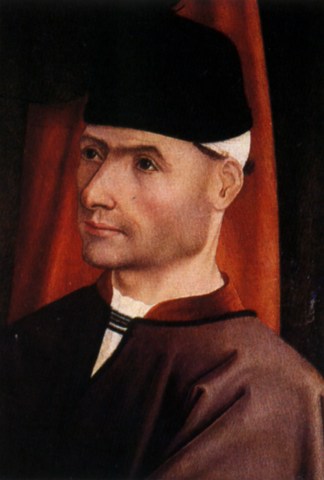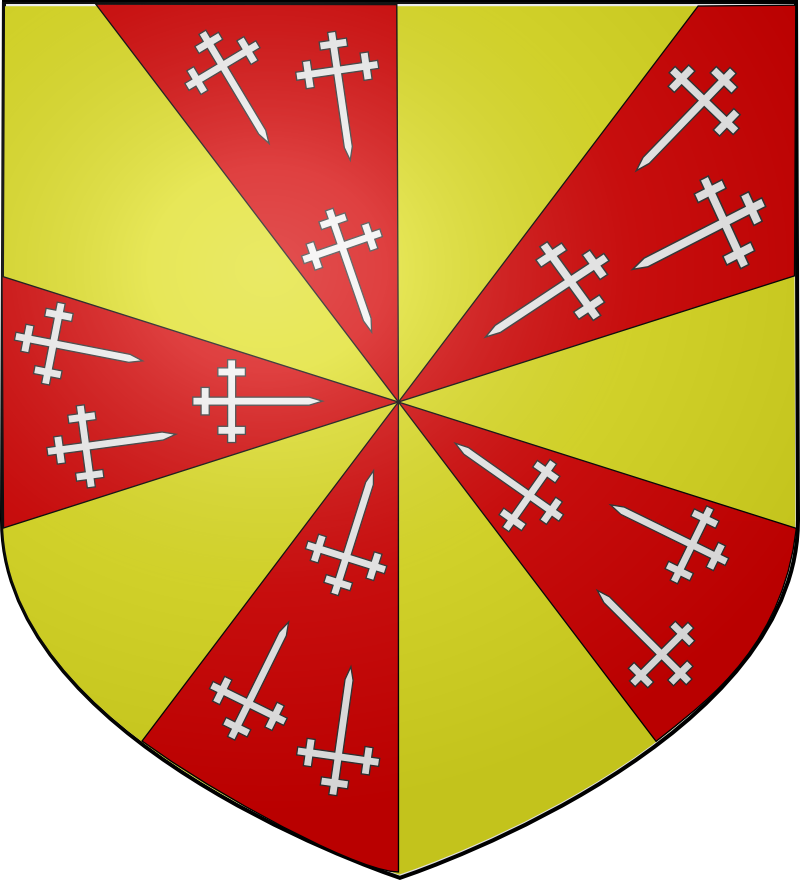1. Overview
Jean d'Orléans, Count of Dunois (November 23, 1402 - November 24, 1468), widely known as the "Bastard of Orléans" (bâtard d'OrléansFrench) or simply Jean de Dunois, was a prominent French military leader during the Hundred Years' War. As an illegitimate son of Louis I, Duke of Orléans, he belonged to a cadet branch of the French royal family. His nickname, "Bastard of Orléans," was a mark of his high status, acknowledging his close familial ties to the king and his de facto leadership of the House of Orléans during the prolonged captivity of his half-brother, Charles, Duke of Orléans. Dunois played a crucial role in French military campaigns, notably collaborating with Joan of Arc and serving as a loyal commander for King Charles VII, ultimately contributing significantly to the French victory in the Hundred Years' War. He was later granted the titles of Count of Dunois and Count of Longueville, becoming the progenitor of the House of Orléans-Longueville.

2. Early Life and Background
Jean de Dunois's early life was marked by the political instability and familial challenges characteristic of the early 15th century in France.
2.1. Birth and Parentage
Jean was born in France on November 23, 1402, as the illegitimate son of Louis I, Duke of Orléans, who was the son of King Charles V. His mother was Louis I's mistress, Mariette d'Enghien. His birth placed him in a unique position within the French aristocracy. His half-brothers included Charles, Duke of Orléans, who later became the father of King Louis XII, and Jean d'Orléans, Count of Angoulême, who was the grandfather of King Francis I. The assassination of his father, Louis I, in 1407 by agents of John I, Duke of Burgundy, and the subsequent capture of his half-brother Charles at the Battle of Agincourt in 1415, which led to Charles's twenty-five years of imprisonment in England, left Jean as the only adult male representative of the House of Orléans.

2.2. Upbringing and Early Activities
Following the tumultuous events surrounding his family, Jean was brought up at the French court alongside his cousin, the Dauphin Charles, who was one year his junior. This upbringing provided him with an education and early exposure to court politics and military affairs. He became a Knight of the Order of the Porcupine. As France was embroiled in internal conflicts during the reign of King Charles VI, Jean de Dunois participated in the civil war on the side of the Armagnac faction. In 1418, he was captured by the rival Burgundians. After his release in 1420, he entered the service of the Dauphin Charles, dedicating himself to the ongoing Hundred Years' War against English forces. His early military engagements included a victory alongside La Hire against English forces at the Battle of Baugé in 1421, for which he was knighted. In 1427, working with La Hire, Jean Poton de Xaintrailles, and Arthur of Richemont, he successfully compelled the Earl of Warwick to lift the Siege of Montargis.
3. Military Career
Jean de Dunois's military career spanned several decades, marked by his strategic acumen and leadership in crucial campaigns that ultimately led to the French victory in the Hundred Years' War.
3.1. Role in the Hundred Years' War
Dunois dedicated his military service to the Dauphin Charles, later King Charles VII, throughout the Hundred Years' War. He consistently fought against English forces, becoming one of the most reliable and effective commanders for the French crown. His unwavering loyalty and strategic contributions were instrumental in turning the tide of the war in favor of France.
3.2. Major Campaigns and Relationship with Joan of Arc
Dunois's involvement in the Hundred Years' War included several pivotal engagements. He was wounded in 1428 at the Battle of the Herrings, also known as the Battle of Rouvray. Later that year, in October 1428, he assumed the role of commander-in-chief for the defense of Orléans and entered the city alongside La Hire and Jean Poton de Xaintrailles as the English laid siege. The Siege of Orléans was a protracted and difficult struggle, but a turning point came with the arrival of Joan of Arc in Orléans on April 29, 1429. Dunois formed a crucial partnership with Joan, and together they led the French forces in taking English forts, successfully relieving the siege in May 1429.
Following the relief of Orléans, Dunois continued to fight alongside Joan of Arc in the campaigns of 1429. He joined forces with other key French commanders, including Jean II, Duke of Alençon, André de Laval, Gilles de Rais, and Arthur de Richemont, the Constable of France. On June 18, 1429, they achieved a decisive victory over the English at the Battle of Patay. Dunois remained active in military operations even after Joan of Arc's execution. He attended Charles VII's coronation in July 1429. In 1432, he recaptured Chartres, and in 1436, he played a vital role in the recapture of Paris from English control.
In the final years of the Hundred Years' War, Dunois was a prominent figure in the campaigns to reclaim French territories. In 1449, he led an army that conquered the majority of Normandy, including the capture of Rouen. After Constable Richemont scattered the English forces at the Battle of Formigny in 1450, Dunois joined him to complete the pacification of Normandy. In 1451, he successfully occupied Guienne, including the important city of Bordeaux. The English attempt to retake Guienne was decisively thwarted at the Battle of Castillon in 1453, effectively bringing the Hundred Years' War to a close.
4. Political Activities
Beyond his military prowess, Jean de Dunois was a significant figure in French domestic politics, navigating complex relationships with the monarchy and participating in internal power struggles.
4.1. Internal Conflicts and Rebellions
Despite his loyal service, Dunois occasionally found himself at odds with the French crown. In 1440, he participated in the Praguerie revolt against King Charles VII. This rebellion, which also involved figures such as Jean II, Duke of Alençon and Charles I, Duke of Bourbon, sought to challenge Charles VII's centralizing policies, including military reforms and taxation on the nobility. The rebels, including Dunois, supported the Dauphin Louis (later King Louis XI) as a figurehead. However, the revolt was ultimately suppressed by Constable Richemont, and Dunois subsequently reconciled with Charles VII.
Later in his life, in 1465, Dunois became a leader of the League of the Public Weal, a coalition of powerful French nobles who rebelled against King Louis XI, the former Dauphin he had supported. This rebellion was also aimed at curbing royal authority. In both instances, despite his involvement in these significant internal conflicts, Dunois managed to regain favor at court, demonstrating his political acumen and influence. After the Hundred Years' War, he also ordered the arrest of his former comrade-in-arms, Jean II, Duke of Alençon, though the specific charges remain unclear.
4.2. Service to the Crown and Reconciliation
Throughout his career, Dunois primarily served the French crown. After the Praguerie revolt, he continued to hold important responsibilities under Charles VII, including negotiating the abdication of Antipope Felix V. His political maneuvering extended to his relationship with Louis XI. Despite his leadership in the League of the Public Weal, Dunois eventually reconciled with Louis XI, securing the recognition of the status of the House of Orléans-Longueville. This reconciliation underscored his ability to navigate the shifting political landscape and maintain his prominent position within the French nobility.
5. Titles and Honors
Jean de Dunois held numerous noble titles and honors throughout his life, reflecting his high status and significant contributions to the French crown.

His titles included:
- Grand Chamberlain of France (1403-1468), a prestigious court office he held from the age of one.
- Lord of Valbonais (1421-1468)
- Lord of Claix (Isère)
- Count of Mortain (1424-1425)
- Viscount of Saint-Sauveur
- Count of Périgord (1430-1439)
- Count of Dunois (1439-1468), a title he received from his half-brother Charles, Duke of Orléans.
- Count of Longueville (1443-1468), a title bestowed upon him by King Charles VII.
6. Personal Life
Jean de Dunois's personal life included two marriages and several children, establishing a notable lineage.
6.1. Marriages and Progeny
Jean de Dunois married twice. His first marriage was to Marie Louvet in April 1422 at Bourges. This marriage lasted until Marie's death in 1426, and they had no children.
He married a second time on October 26, 1439, to Marie of Harcourt, Lady of Parthenay, who died in 1464. Together, they had four children:
- Jean** (1443-1453)
- François I d'Orléans-Longueville** (1447-1491), who inherited his father's titles and became Count of Dunois, Tancarville, Longueville, and Montgomery. He also held titles such as Baron of Varenguebec, Viscount of Meulan, Chamberlain of France, Governor of Dauphiné and Normandy, and Grand Seneschal and Commander-in-Chief of Normandy. François married Agnès of Savoy (1445-1508) on July 2, 1466. One of their notable children was Louis I d'Orléans, duc de Longueville.
- Marie** (1440-?), who married Louis de la Haye, Lord of Passavant and Mortagne, in 1466.
- Catherine d'Orléans** (1449-1501), who married Johann VII of Saarbrücken-Commercy (1430-1492), Count of Roucy, on May 14, 1468. They had no issue.
7. Death
Jean de Dunois died on November 24, 1468, at the age of 66, marking the end of a long and influential life dedicated to military service and political maneuvering in France.